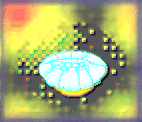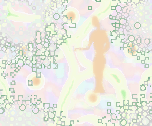|
The origin of Japanese culture and, the worldview as its logical conclusion. |
 | ||||
|
It revised the former edition. Hiromasa Noguti. December 19, 2011.
It partly fixed the language of html in July 24, 2016. It fixed the language of html in February 10, 2017. -------------------------------------------------------------------------------------------------- To old edition. |
|||||
|
3. The soul of Jomon lurking to Japanese gods and goddesses. 3-4. The country of the gods and goddesses. |
|||||
|
In the Yakumo village of Tottori Prefecture, there is the Kuma-nho shrine to be said to exist since the age of the gods. And, it is said that the god enshrined to this shrine is "Kamuroki-kumanu-nho-kusi-mikenu", is the very historic god. If so, it seems that it can decipher the name of this unidentifiable god with using the Jomon language same as it deciphered Takami-musubi and Kan-musubi. Thereupon, it started to decipher this name in the dictionary of Ainu's language compiled by Dr. Tiri Masiho. Needless to say, it is because Ainu's language is supposed to be similar to Jomon language. And, it could decipher this name fast beyond expectation. When it finished deciphering that name, it can read it with the pronunciation of "Kamuy-rok-kuma-nesir-mek-ka" with Ainu's language. And, it could notice what does this name mean, in the following reason. The "Kamuy-rok" in Ainu's language means that the gods and goddesses are sitting on something. The "rok" is the verb used in plural. And, since the "kuma" is the sideways long wooden stick used to hang the fishes, and so on, this word also is used as the adjective meaning the sideways long. So, since the "nesir" is the noun meaning the mountain, it is said the "kuma-nesir" is the compound word meaning the chain of mountains. Actually, since there are the place names called "Kuma-nho" in the relatively low positions able to view the chain of mountains, this understanding would be proper. The "kuma-nho" is written as the "bear-plains" in the Chinese Characters. However, to tell the truth, it should think that the "kuma-nho" originally was the "kuma-nesir" meaning the chain of mountains, not the plain. Then, the "mek-ka" expresses the ridges of farmed land or other originally. Therefore, in this case, it seems that the "mek-ka" expresses the shape of chain of mountains. Probably the people in the ancient times may have compared such shape to the ridge of sword. Therefore, it can understand the "Kamuy-rok-kuma-nesir-mek-ka" as the image of the gods and goddesses who sit on the chain of mountains like ridges of sword. Since it thinks that above reasoning and decipherment are proper, it is certain this name originally was composed of the Jomon language. * In passing, there was the Japanese classical scholar named Norinaga Motoori in the Edo period. He says the "Kamuroki-kumanu-nho-kusi-mikenu" is "Susa-nho-o" probably. However, this opinion would be the misunderstanding probably. By the way, the present usual opinion says the "Kamuroki-kumanu-nho-kusi-mikenu" is the unidentifiable god living in the area called the "Kuma-nho". And, it also is said the "kusi-mi" in Japanese language means the "kusi-hi", that is, the "unidentifiable strange soul of something" originally. However, it doesn't seem that such recognition is proper at all. If it notices the "h i" of the "kusi-hi" has the common point to the "h i" of "Kamuy-mun-un-hi"(Ainu's language) at the meaning and pronunciation, it almost is certain that this name is composed of the Jomon people's words and means that the gods and goddess are sitting on the chain of mountains. And, if it considers the meaning of this name, it seems that it was the idiomatic phrase originally. However, since this idiomatic phrase was used in the prayer frequently, it seems that it became the religious words gradually. The image of the panorama of the gods and goddesses' sitting on the chain of mountains and talking. That must have been the original meaning of this god's name. However, it came to be used as the general title of the gods and goddesses for the prayer gradually. And, the "kuma-nesir" of this name came to be written like the "kuma-nu-kusi", that is, the "bear-plains-comb" in the Chinese Characters, soon as it is written like that today. Therefore, it thinks that the time the "Kuma-nho" became the place name is after it was expressed with the Chinese Characters like that. The place name roughly is born of the historical occurrences or the sight, and so on of the said land. And, the places called the "Kuma-nho" all are seen in the relatively low position among the mountains. If not, even if this place name was the "Kuma-yama", that is, the "bear-mountain", it never be strange. Rather in this case, it seems to be more proper to be named "Kuma-yama" than "Kuma-nho". In spite of that, it was named the "Kuma-nho", that is, the "bear-plains". It must be because the origin of this name means the "kuma-nesir", that is, the chain of mountains in the Jomon language. As it stated before, the usual opinion says this name expresses the unidentifiable god. But, it is very strange opinion. The gods and goddesses the people in ancient times worshipped roughly were the deification of the concrete phenomenon or were also the deification of the special person or creature. In other words, the deification like that needs the concrete divine nature. Even if that is said to be the iron law in the case worshipping the gods and goddesses, it never be exaggeration. In other words, it was meaningless to deify the unidentifiable things at least at ancient times. If so, why would this god to originally be the plural be said to be unidentifiable god now? Somehow, it feels the smell of political plot there.It thinks about that problem as follows. First, it is possible to think these gods and goddesses were changed to the unidentifiable single god gradually as the Yamato's supremacy expands. But, it may not have been that the political intention was related to such change of divine nature obviously since its first. However, it seems there was certain fear the powers hold about those gods and goddesses, at the undercurrent of the trend of times like that. Probably, it must be because these gods and goddesses sitting on the chain of mountains were emitting the smell of Jomon culture too much. If it leaves off those gods and goddesses as it is so, it can't assert that those gods and goddesses don't give Emishi's or other's resistance the force. Therefore, it seems that Yamato came to conceal the divine nature of these gods and goddesses intentionally, soon. Kamuroki-kumanu-nho-kusi-mikenu as the single god was born in the process where the olden gods and goddesses are changed to support the Yamato. Once, the "Kamuroki-kumanu-nho-kusi-mikenu" was the title expressing the very historic gods and goddesses, was the holy sight of the gods and goddesses materializing to this world persistently. It originally wasn't the name of single god. The talking huge gods and goddesses about the benefits to give the people, sitting on the chain of mountains and putting the legs on the hills. In those days, to the Jomon people's heart, a breathtaking panorama of the gods and goddesses must have been imaged in the vivid sight. By the way, the tradition in Japan says that the Japanese gods and goddesses gather to the Izumo shrine at the October at lunar calendar. However, if it considers the meaning of "Kamuroki-kumanu-nho-kusi-mikenu", it seems that it originally was the traditional ceremony inherited in Kumano shrine. If so, why would this tradition have been transferred to Izumo shrine, when? Probably, it is related to the change of divine nature of the gods and goddesses in question. Yamato was feeling certain fear about the grand sight of the gods and goddesses in question as it stated before. This is the serious problem For Yamato. Yamato must have wanted to erase this tradition and also the original meaning of Kamuroki-kumanu-nho-kusi-mikenu. However, if it treats these carelessly, it can't assert that the sleeping dogs don't wake up. The former or olden ruling class clans are keeping the political harmony by this tradition, and so on since the old times. There aren't horrible things than the society with no unity, especially for the government. Yamato needed the second best plan. Thereupon, it seems that Yamato used the Izumo shrine to take away the smell of jomon culture out of the tradition in question and the idiom which is used as the name of single god today. In other words, it seems that Yamato gave the tradition and idiom in question to Izumo shrine, taking those from Yakumo shrine. The Izumo shrine is very near the Kumano shrine. Furthermore, since the god enshrined in Izumo shrine is Oo-kuni-nusi, this god is the representative god at Izumo family it thinks to be the former ruling class. If so, it seems that they relatively easily permit Yamato to transfer those in question to Izumo shrine. At least Yamato must have thought so. Furthermore, According to the myth, Oo-kuni-nusi was the god who gave Yamato government one's country. If so, even if Yamato treats Oo-kuni-nusi as the god of Yamato, it never be strange. In other words, it was the plan easy to accept for also the people of Yamato. Yamato must have transferred those to Izumo shrine, threatening the former ruling class clans and so on or cajoling them. The reason this tradition came to be said to be the tradition of Izumo shrine was the gifts of the intentional propaganda continued for long. And, the meaning of the idiom in question also got changed to the name of single god with the people's forgetting the true meaning. So, most of people living in the Japanese Islands apparently looked to have accepted the change of the tradition like that and also the change of the gods and goddesses. | |||||
NEXT
 PAGE PAGE
|
Introduction. The mental problems of Japan. # 1. Culture and civilization. Ecosystem and the diverse human world. # 2. The fundamental understanding to Japanese culture. # 2-1. The formation of Japanese peoples. # 2-2. About Japanese language. # 2-3. Japanese culture and the Japanese people's brain. # 3. The soul of Jomon lurking to Japanese gods and goddesses. # 3-1. The origin of Japanese double standard. # 3-2. The divine nature of the gods of the Koto-ama-tu-kami. # 3-3. The change in the divine nature at the gods and goddesses. # 3-4. The country of the gods and goddesses. | ||||
|
# 3-5. The birth of Ebisu.
# 4. The world view Jomon people think. # 4-1. The Jomon world : The profit and the barter economy. # 4-2. The religion for Jomon people. # 4-3. "The myth of birth of Japanese countries" and "the thought of Itak". # 4-4. The world view lurking to us. # 5. The subject and object to realize into "Kan-musubi" and "Takami-musubi". # 6. The physical world the cognition-subject sees. (Characteristic time, Subjective time, and Objective time.) # 7. The information and the cognition-subject. |
|||||
Cotosiro | |||||